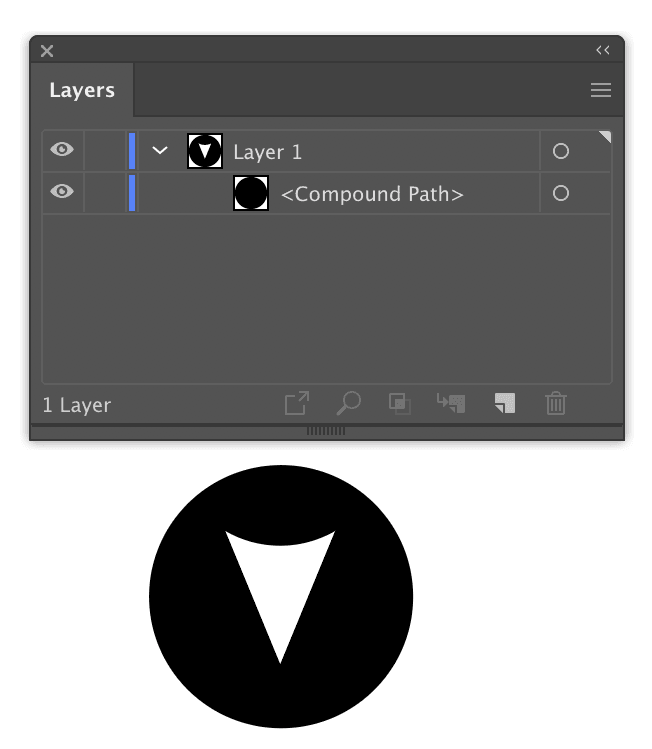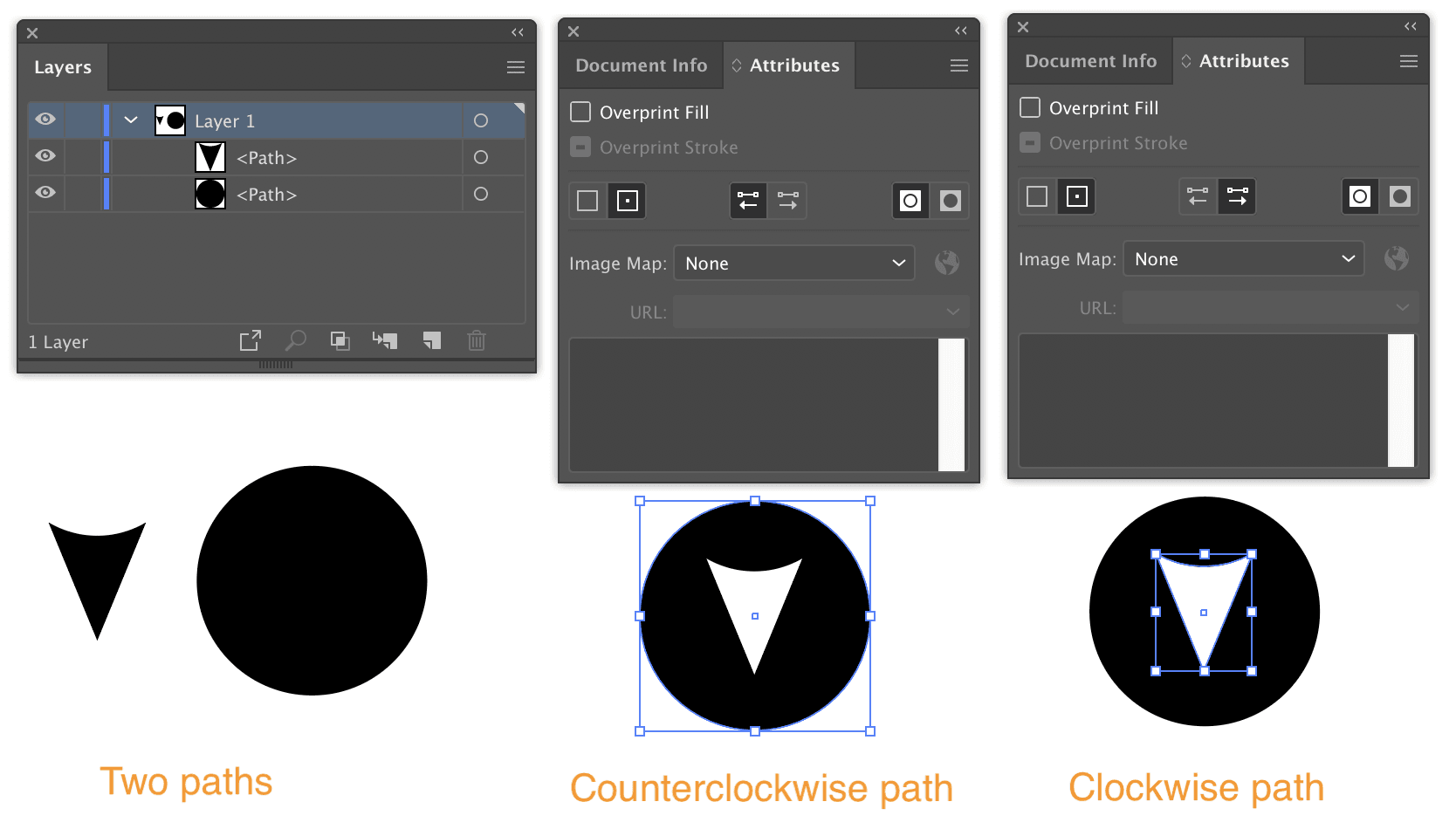Introduction
Attributes panel lets you choose overprint options for an object, show or hide an object’s center point, switch the fill between color and transparency in a compound path, or change an object’s fill rule. To open attributes panel, go to Window > Attributes.
Fill Rules
If compound paths are composed of multiple shapes joined together with overlapping regions. Adding a basic fill color to compound paths works similarly to filling normal shapes, but the result is very different. Illustrator uses two methods for handling overlapping areas. The Even-Odd Fill Rule fills the shapes but leaves the intersecting areas unfilled. The Non-Zero Winding Fill Rule offer greater control by enabling you to selectively fill areas or remove the fill.
Even-Odd Fill Rule
Below figure shows fill using ‘Even Odd Fill Rules’. Make a compound path using multiple paths and select this fill rules.
Non-Zero Winding Fill Rule
Non-Zero Winding Fill Rule takes into account the direction of a path: An area enclosed by a clockwise loop counts as +1, and an area enclosed by a counterclockwise loop counts as –1. When the sum of these counts is zero, that area becomes hollow. When it is anything else, that area becomes solid. To fill using this rule
- Create compound path.
- Select Use Non-Zero Winding Fill Rule icon from Attributes panel.
- Select individual path located within the compound path using Direct Selection tool
- Select Reverse Path Direction On or Reverse Path Direction Off from Attributes panel to add or remove fills.
In the below figure, both path has black fill. These paths are merged to form compound path, and above steps are applied to create a hole in the intersection area.


